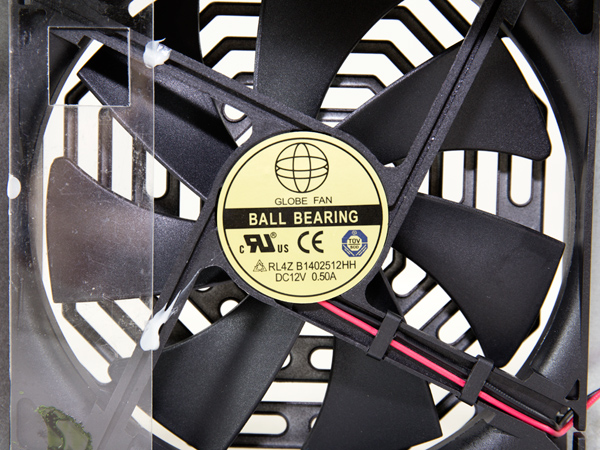Super Flower Leadex Titanium 1000W PSU Review
Super Flower was one of the first companies to release an 80 Plus Titanium-rated PSU. Following the ultra-high-capacity SF-1600F14H unit, the company released two more Titanium PSUs, one of which we're evaluating today.
Why you can trust Tom's Hardware
A Look Inside And Component Analysis
Parts Description
Before proceeding with this page, we strongly encourage you to a look at our PSUs 101 article, which provides valuable information about PSUs and their operation, allowing you to better understand the components we're about to discuss. Our main tools for disassembling PSUs are a Thermaltronics soldering and rework station, and a Hakko 808 desoldering gun.
| Primary Side | |
|---|---|
| Transient Filter | 4x Y caps, 3x X caps, 2x CM chokes, 1x MOV |
| Inrush Protection | NTC Thermistor & Electromagnetic Relay |
| Bridge Rectifier(s) | Bridge-less Design - 1x US30K80R & 4x Infineon MOSFETs |
| APFC MOSFETs | 4x Infineon MOSFETs |
| APFC Boost Diode | 4x Infineon IDH06G65C5 |
| Hold-Up Cap(s) | 3x Nippon Chemi-Con (400V, 2x 390uF & 1x 330uF, 1110uF combined, 105 °C, KMW) |
| Main Switchers | 4x Infineon IPP50R199CP (550V, 11A @ 100 °C, 0.199ohm) |
| APFC Controller | SF29603 |
| Switching Controller | SFAA9013 |
| Topology | Primary side: Bridge-less PFC & Full-Bridge LLC & Resonant Converter Secondary side: Synchronous Rectification & DC-DC converters |
| Secondary Side | |
| +12V MOSFETs | 8x Infineon BSC027N04LS |
| 5V & 3.3V | DC-DC Converters: 8x Infineon IPD060N03 FETs |
| Filtering Capacitors | Electrolytics: Chemi-Con, 105 °C, KY, KRG & KMG Polymers: Chemi-Con |
| Supervisor IC | AA9013 & LM324ADG |
| Fan Model | Globe Fan RL4Z-B1402512HH (140mm, 12V, 0.5A, 1800 RPM, 70,000-hour MTBF) |
| 5VSB Circuit | |
| Rectifying Diode | Mospec S10C60C |
| Standby PWM Controller | 29604 |

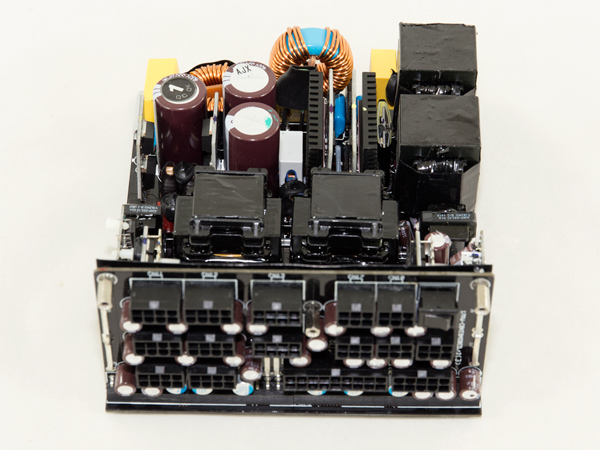
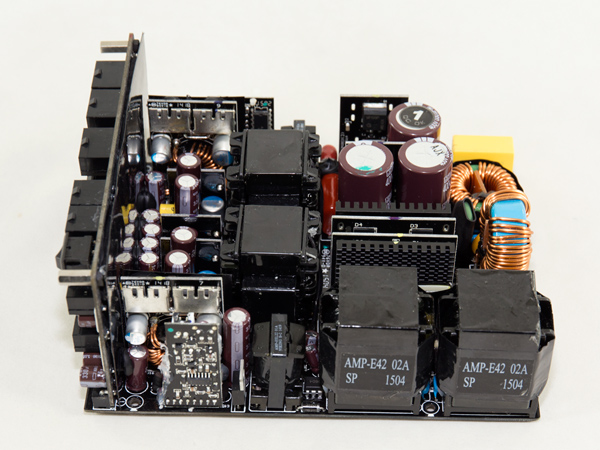
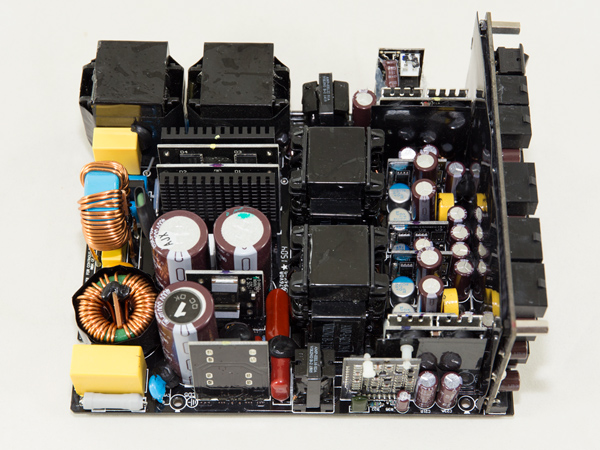
Super Flower's platform uses an advanced design to achieve Titanium-class efficiency. The first part that distinguishes it from the Leadex Platinum and Gold platforms is the bridge-less design. All regular bridge rectifiers consist of diodes, where forward voltage drops occur. Energy is lost there, which inevitably has a negative effect on efficiency. By using FETs that don't incur voltage drops (instead of the normal bridge rectifiers), we get reduced energy loss, enabling Titanium-class efficiency. In this PSU, the APFC converter handles rectification of the incoming AC voltage and afterwards shapes the current waveform to make it similar to the voltage waveform, thereby minimizing the amount of power that returns to the mains grid. Again, less energy goes wasted.
A full bridge topology is used along with an LLC resonant converter on the primary side; in the secondary side, a synchronous design is utilized in conjunction with two DC-DC converters for the minor rails. As you can see from the photos above, there are almost no heat sinks in this PSU, even though it features semi-passive operation. This was made possible thanks to the platform's ultra-high efficiency, which effectively limits energy loss and heat dissipation. Super Flower also uses high-quality parts more tolerant of heat, including Japanese polymer and electrolytic caps.
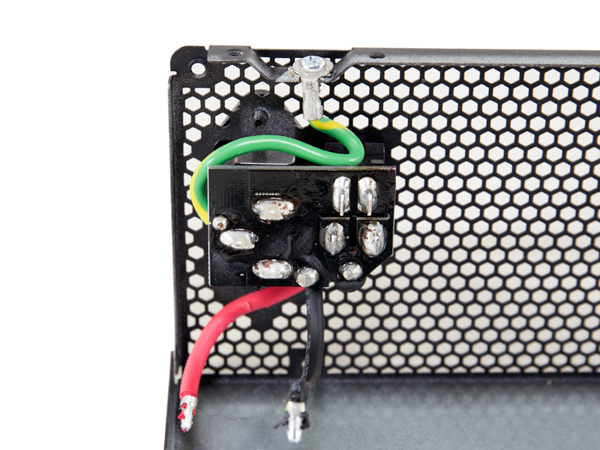
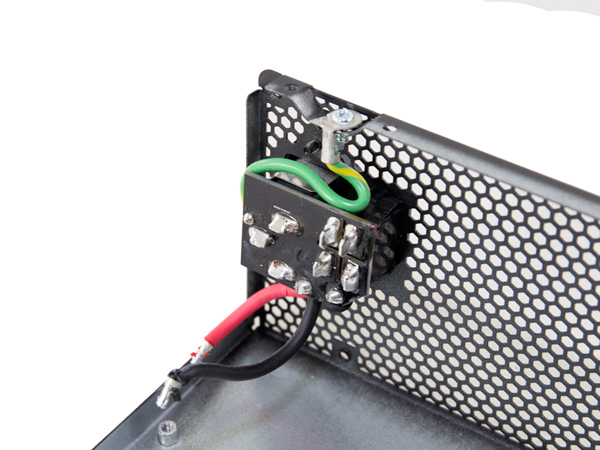
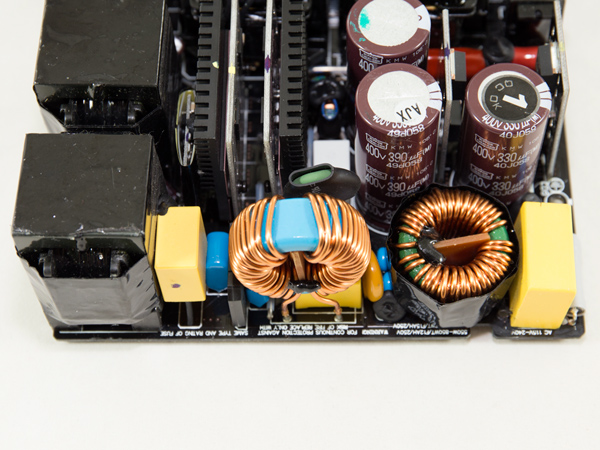
The AC receptacle, along with the on/off switch, are installed on a small PCB that doesn't have any EMI filtering components. Those are all found on the main PCB, and include two pairs of Y caps, three X caps, 2 CM chokes and an MOV.
The single US30K80R bridge rectifier is used by the 5VSB rail, since once the PSU starts up the rectification takes place in the APFC converter.
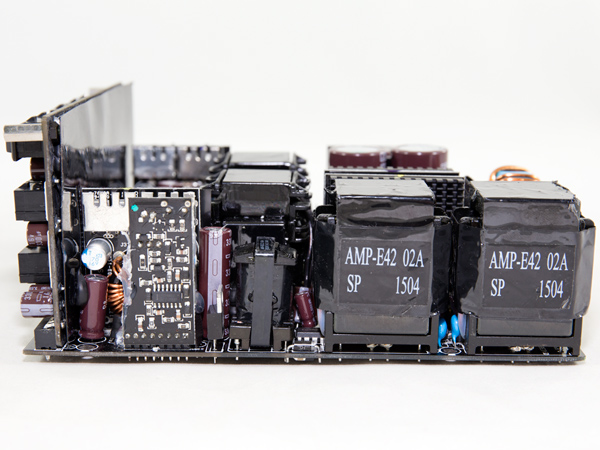
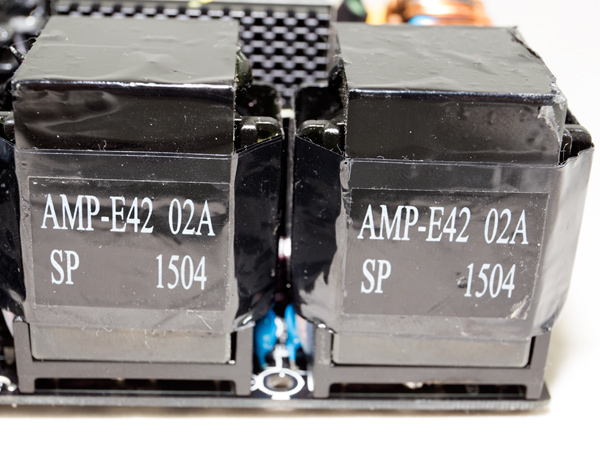


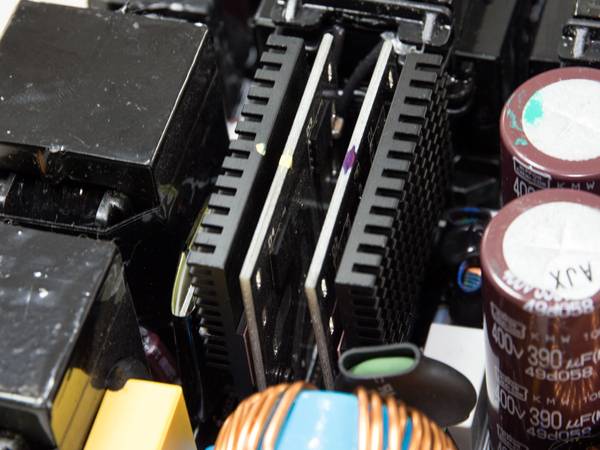
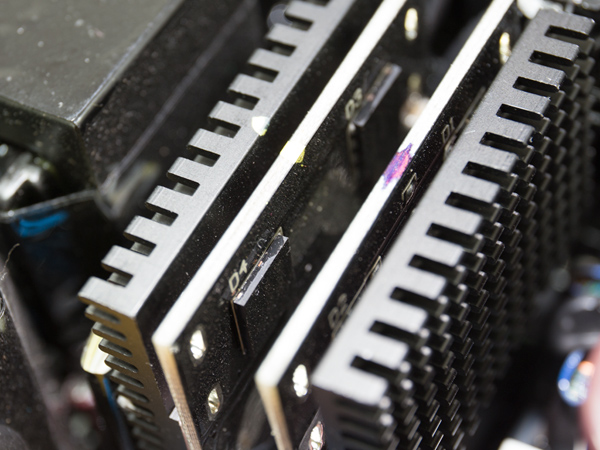

More than likely, four FETS are used in the APFC converter, along with an equal number of Infineon IDH06G65C5 boost diodes. In total, three bulk caps rectify the APFC converter's loosely regulated DC bus voltage. The bulk caps are provided by Nippon Chemi-Con and are rated at 105 °C. Two of them have 390uF capacity and one has 330uF. Their combined capacity (1110uF) meets the needs of this PSU, allowing for a higher hold-up time than what is the required by the ATX spec.
The PFC controller, an SF29603 IC, is installed on a small vertical daughterboard, which is wrapped in Mylar tape to protect against EMI emissions.
Get Tom's Hardware's best news and in-depth reviews, straight to your inbox.

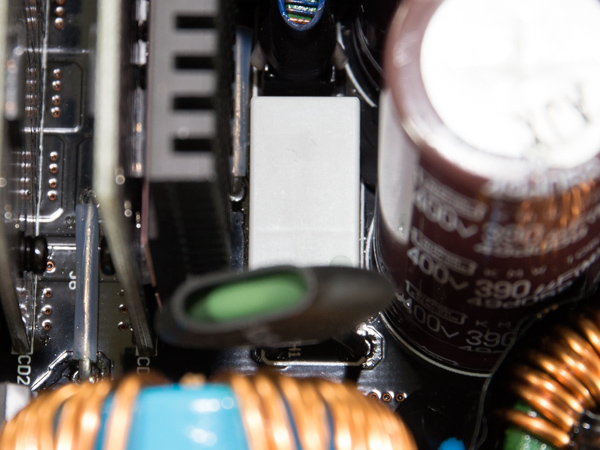

A large NTC thermistor provides protection against large inrush current. There is also an electromagnetic relay that offers a slight efficiency boost and allows for a fast cool-down of the NTC thermistor.
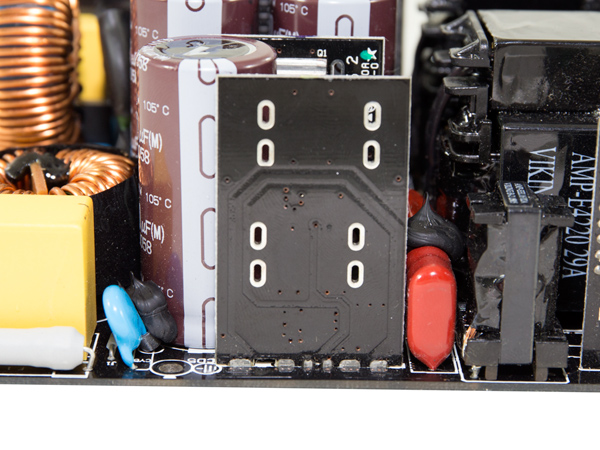
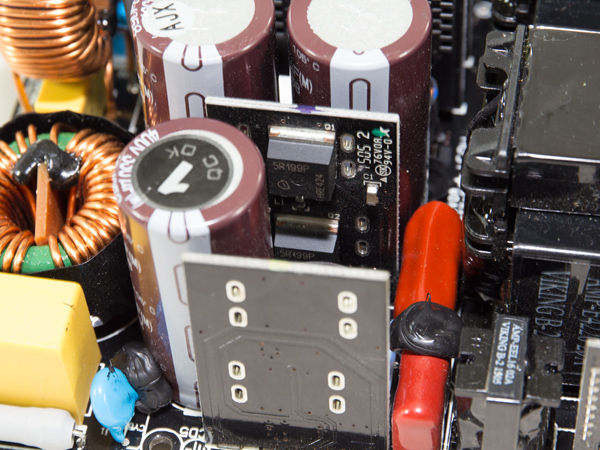
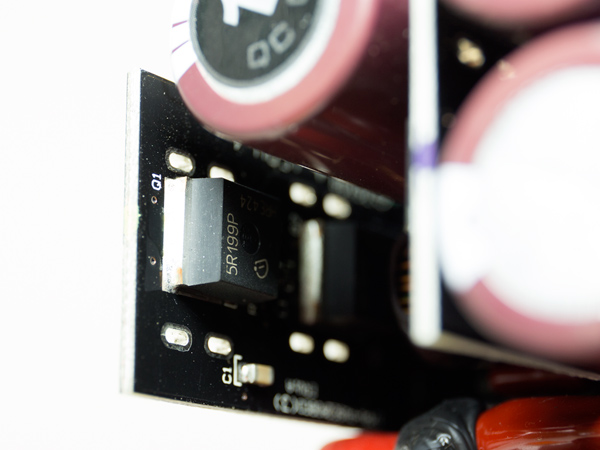

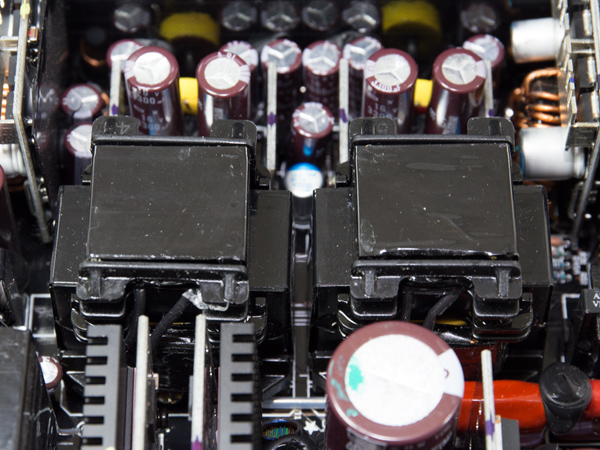
The main switchers are four IPP50R199CP FETs arranged into a full bridge topology. The SF-1600F14HT uses four IPP50R140CPs instead. Since the main PCB's available space is limited, Super Flower used two main transformers in parallel rather than one large one.

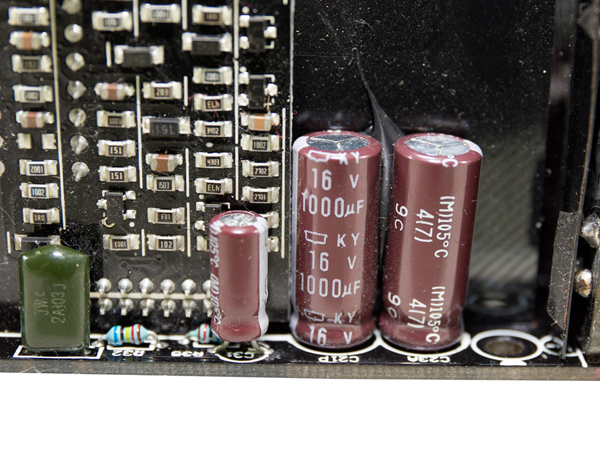
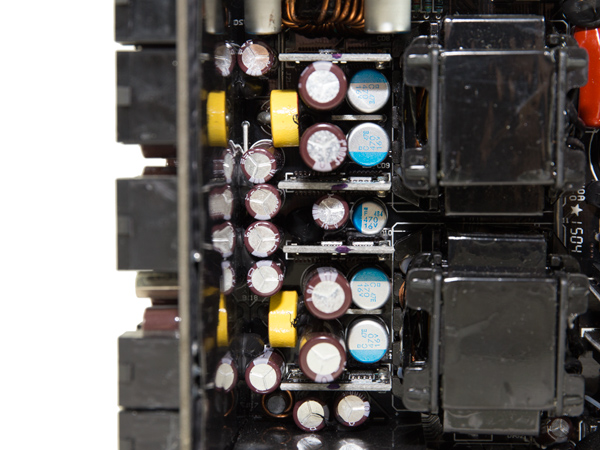
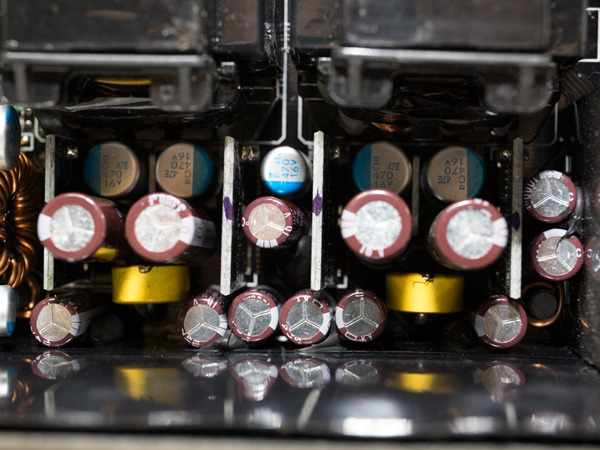
The polymer and electrolytic filtering capacitors are provided by Chemi-Con, so we expect them to be of high quality. Most electrolytic caps belong to Chemi-Con's KY series and all electrolytic caps are rated at 105 °C.
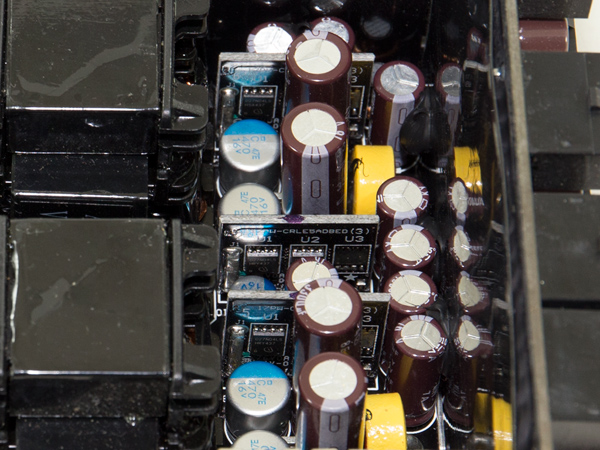
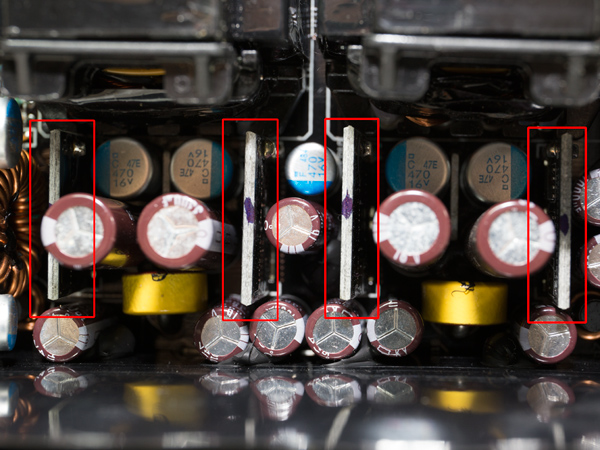
In the secondary side, we didn't find any heat sinks, which looks weird in a 1kW PSU. The +12V rail is regulated by eight Infineon BSC027N04LS FETs installed on four vertical PCBs. The larger Titanium-rated Leadex platform with 1.6kW max power uses twelve of these FETs.
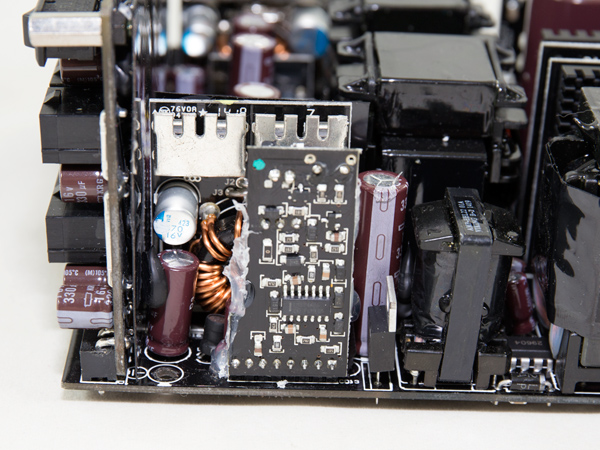
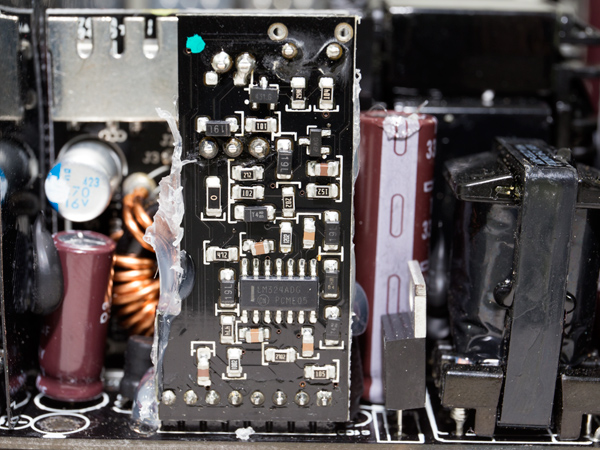
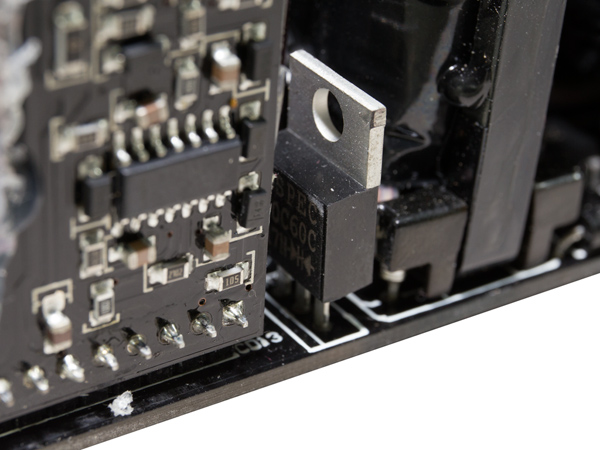
We applied lots of glue to the PCB that holds the fan control circuit; it's easy to break its base once you try to remove the fan header, and then it's really hard to solder back together. On the same PCB, we found an LM324ADG operational amplifier (op-amp). Right next to the fan control PCB is a Mospec S10C60C SBR, responsible for the 5VSB rail.
The standby PWM controller is an IC with the "29604" marking on it. Unfortunately, this number doesn't reveal any information about its specs. Most likely it is a proprietary Super Flower IC.
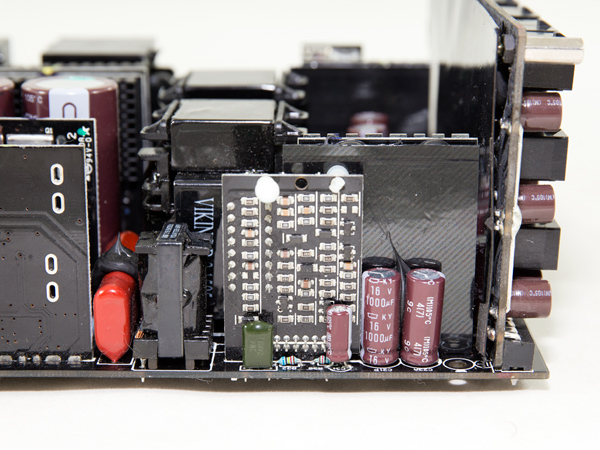
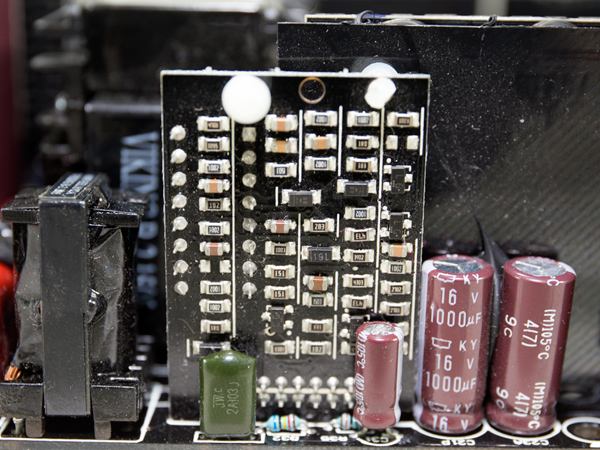
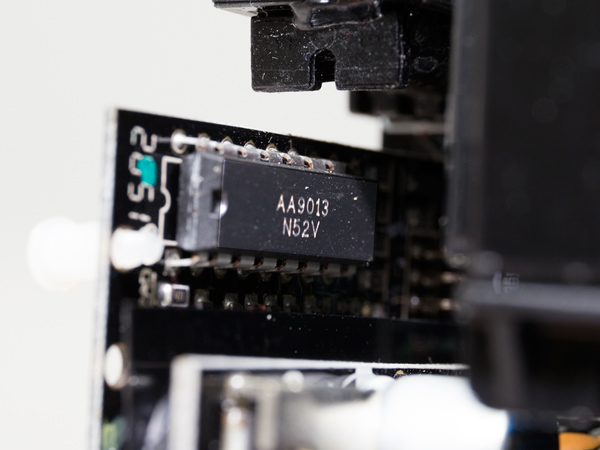
The resonant controller is an AA9013 IC, which is used on all high-efficiency Leadex platforms. On the PCB that hosts this IC, we also found an LM324ADG op-amp.
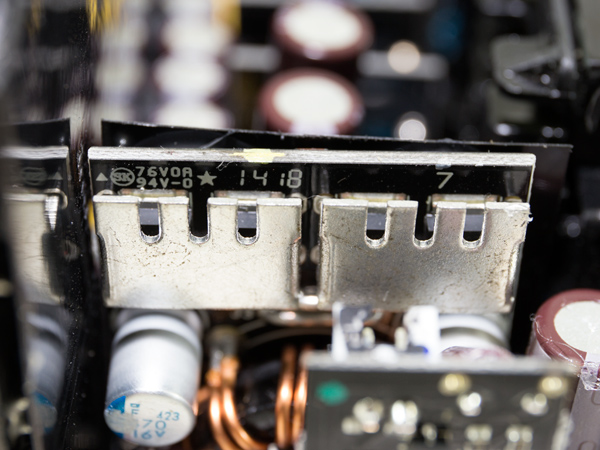
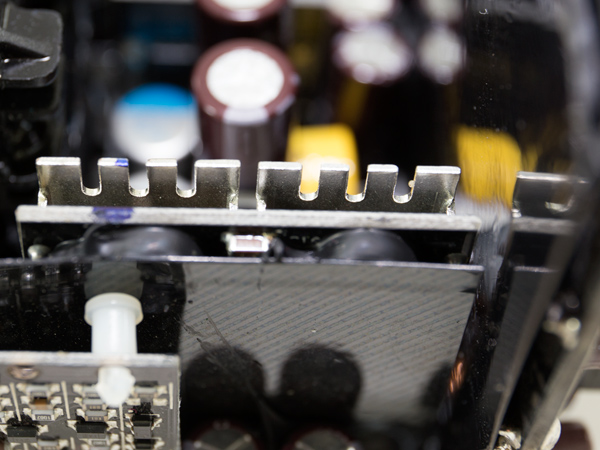
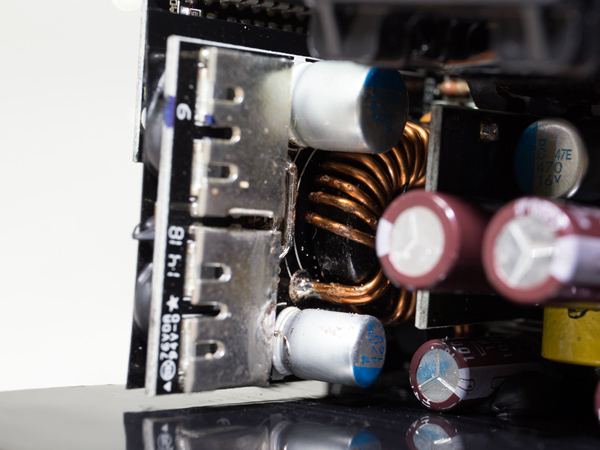
Two boards host the DC-DC converters that generate the minor rails. In total, eight Infineon IPD060N03s are used in these converters. Metal shields on top of the FETs provide EMI protection. At the same time, those shields make identifying these parts difficult.
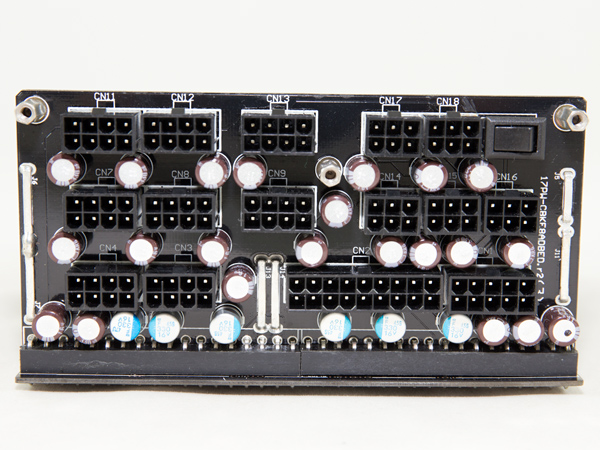

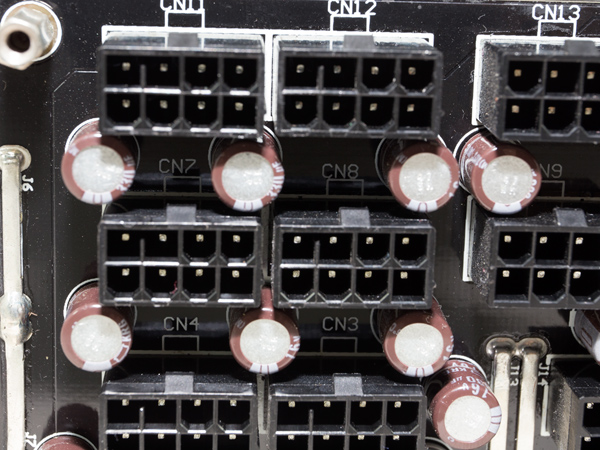
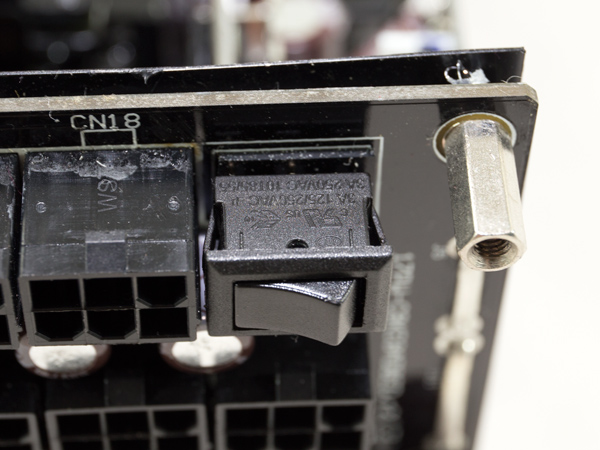

On the front side of the modular board, lots of polymer and electrolytic Chemi-Con caps suppress ripple.
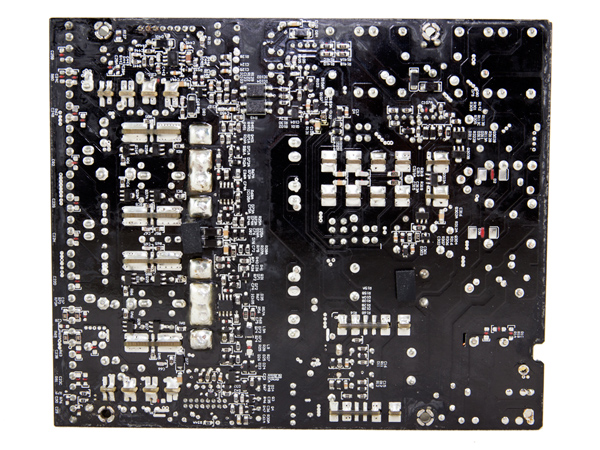
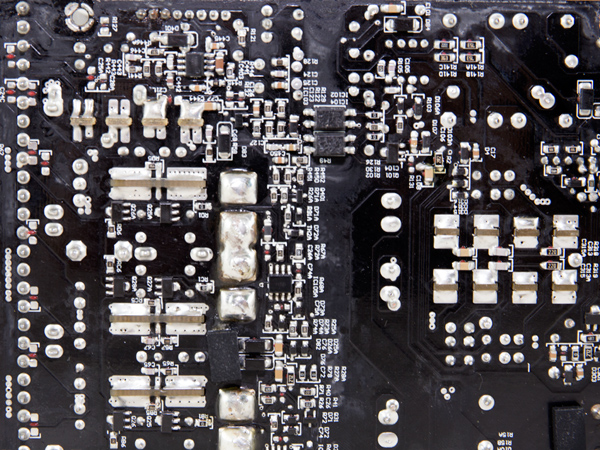

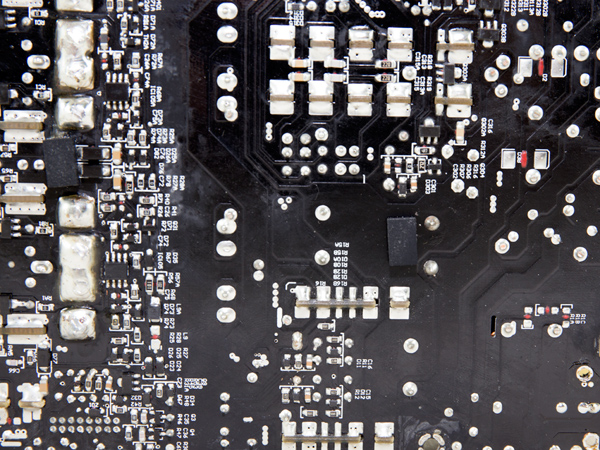


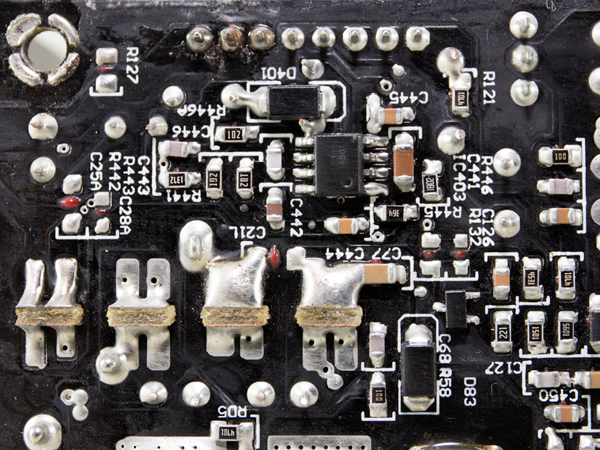
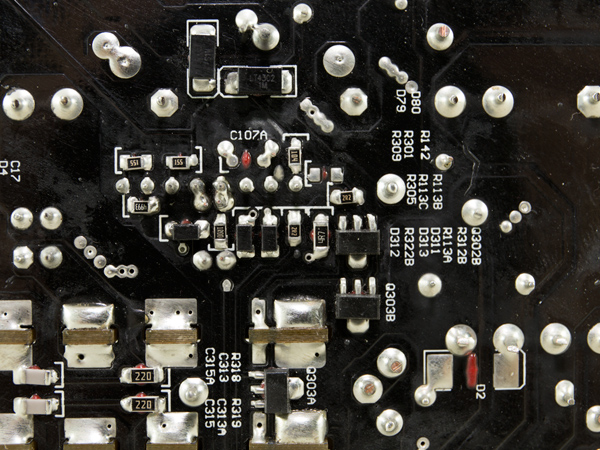
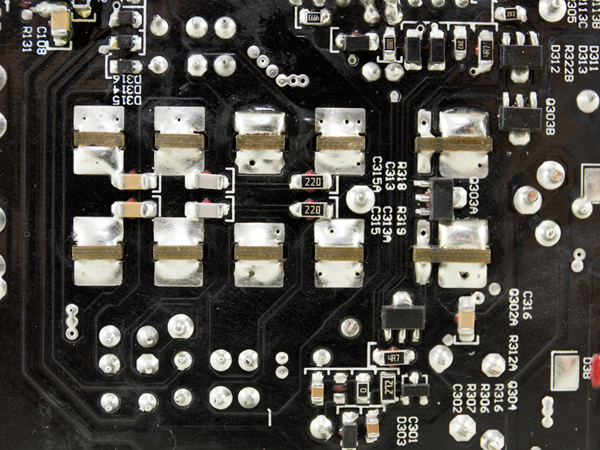
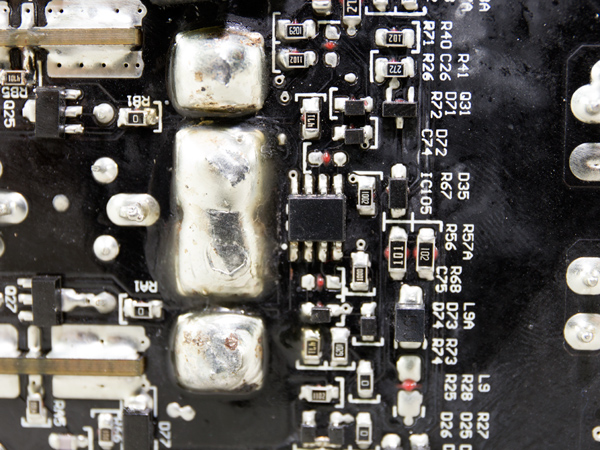
Super Flower's soldering quality is decent, but definitely not top-notch. It serves its purpose and shouldn't hold the PSU's performance back.
The RL4Z-B1402512HH fan is provided by Globe Fan (140mm, 12V, 0.5A, 1800 RPM, 70,000-hour MTBF). Thanks to its dual ball-bearings, the fan should last a long time. If you activate ECO mode, it won't spin under light and moderate loads, increasing its lifetime even more. Although this fan isn't quiet at higher speeds, you won't hear it under normal conditions. Even when it's activated it spins slowly. You have to push the PSU really hard to make the fan work so hard that it's noticeable.
Current page: A Look Inside And Component Analysis
Prev Page Packaging, Contents, Exterior And Cabling Next Page Load Regulation, Hold-Up Time And Inrush Current
Aris Mpitziopoulos is a contributing editor at Tom's Hardware, covering PSUs.
-
AnimeMania Are modular cables interchangeable between the different power supply vendors or will this happen in the future.Reply -
blazorthon ReplyAre modular cables interchangeable between the different power supply vendors or will this happen in the future.
Some might be, but generally, don't expect interchangeable cables. There are many different implementations for the connectors for one reason or another. -
Aris_Mp ReplyAre modular cables interchangeable between the different power supply vendors or will this happen in the future.
It highly recommended to assume that they are not, even when the PSU is made by the same manufacturer.
-
Aris_Mp ReplySo, ah, what did you use as a price?
We used the price sold in EU stores, excluding the VAT of course. -
babernet_1 Reply17269051 said:So, ah, what did you use as a price?
We used the price sold in EU stores, excluding the VAT of course.
Which is? I looked and saw a price of 200 euro. That's about $220. Does it include VAT? -
babernet_1 Reply17273936 said:yes, in EU most stores include VAT in their prices.
My gosh! I just want to know in dollars what your estimated price was!
:??: -
Andi lim Using a bunch of KRG series capacitor for extra suppress ripple in Titanium PSU ?Reply
The Analogy : you want to build a super car, lets say Nissan GTR, but at the end you decide to use some cheap parts from Datsun on to your car, hahahaha.
The Question is, How long this PSU will stay in titanium level efficiency ?
Let's say after a year usage, the standard and cheap KRG capacitor will slowly increace the ESR, leak current dan temperature. at that time, this PSU efficient will go to platinum level or below ? Only time will tell.



